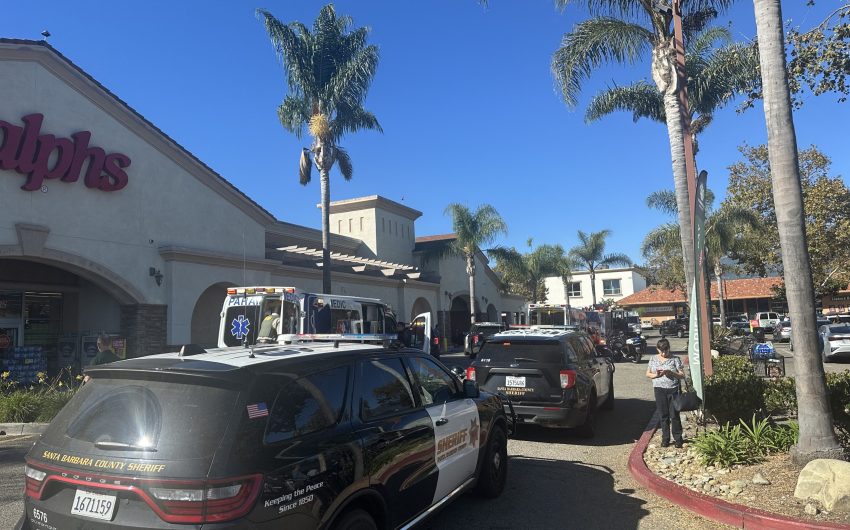Annual Report on Utah’s Environmental Stewardship and Sustainable Development
Core Focus on Sustainable Development Goals (SDGs)
Utah State University’s Janet Quinney Lawson Institute for Land, Water, and Air has released its fifth annual report to the state governor and legislature. The report synthesizes extensive research projects to provide actionable insights on environmental management, directly aligning with the United Nations’ Sustainable Development Goals (SDGs).
- Land Management: The report addresses land use strategies, contributing to SDG 15 (Life on Land) by focusing on ecosystem protection and sustainable land practices.
- Water Resources: Analysis of the state’s water supply and infrastructure directly supports SDG 6 (Clean Water and Sanitation).
- Air Quality: Research on air quality issues informs policies related to SDG 11 (Sustainable Cities and Communities) and SDG 13 (Climate Action).
2024 Special Topics and SDG Integration
This year’s report features two special chapters that examine critical challenges through the lens of sustainability.
- Energy’s Environmental Impact: In response to statewide energy goals, this chapter assesses the effects of energy development on natural resources. It provides a crucial analysis for balancing SDG 7 (Affordable and Clean Energy) with the imperatives of SDG 6 (Clean Water and Sanitation), SDG 13 (Climate Action), and SDG 15 (Life on Land).
- Utah’s Sustainable Future: This section outlines a long-term vision for the state’s land, water, and air over the next decade and beyond. It focuses on strategic planning to create resilient and sustainable environments, directly contributing to the objectives of SDG 11 (Sustainable Cities and Communities).
Key Findings and Progress Towards SDGs
The report highlights several key areas of progress and concern, each corresponding to specific SDGs.
- Wildlife Overpasses: The success of these structures is presented as a key achievement for SDG 15 (Life on Land), demonstrating effective measures to protect biodiversity and reduce human-wildlife conflict.
- Cut Flower Industry: The growth of this local industry is noted as a positive development for sustainable agriculture and local economies, supporting SDG 8 (Decent Work and Economic Growth).
- Dam Infrastructure: The report underscores the urgent need for dam upgrades to ensure water security and resilience, a critical component of SDG 6 (Clean Water and Sanitation).
- Risk Management: Research panels on wildfire, earthquake risk, and invasive carp in Utah Lake address the need for proactive management to protect ecosystems and communities, aligning with SDG 11 and SDG 15.
Stakeholder Engagement and Partnerships for the Goals
The institute’s work exemplifies SDG 17 (Partnerships for the Goals) through its collaboration with state leadership. The report was formally presented to Governor Spencer Cox and state legislators at an event in Salt Lake City. Furthermore, a partnership with the Utah House of Representatives led to the presentation of the Utah Water Pioneer Award to Jamie Barnes, Director of the Utah Division of Forestry, Fire, and State Lands, recognizing her significant contributions to achieving the targets of SDG 6 and SDG 15.
1. SDGs Addressed in the Article
-
SDG 6: Clean Water and Sanitation
The article directly addresses this goal by discussing Utah’s “water supply,” the “need for dam infrastructure upgrades,” the management of “Utah Lake invasive carp,” and the presentation of the “Utah Water Pioneer Award.” These topics are central to ensuring the availability and sustainable management of water.
-
SDG 7: Affordable and Clean Energy
This goal is connected through the article’s mention of the state’s need for “more energy” and the importance of understanding its “impacts on our water supply and our air quality.” This implies a focus on developing energy resources sustainably.
-
SDG 11: Sustainable Cities and Communities
The focus on managing “wildfire” and “earthquake risk” relates to making communities safer and more resilient to natural disasters. The integrated approach of the report, covering land, water, and air, is fundamental to planning for sustainable communities.
-
SDG 13: Climate Action
The article’s emphasis on “management of wildfire” is directly linked to climate action, as climate change is a significant driver of increased wildfire risk. Managing this risk is a key component of climate adaptation strategies.
-
SDG 15: Life on Land
This goal is clearly addressed through the discussion of the “success of wildlife overpasses” (protecting biodiversity), “management of wildfire,” and the work of the “Utah Division of Forestry, Fire, and State Lands.” The issue of “invasive carp” also relates to protecting ecosystems from invasive species.
2. Specific SDG Targets Identified
-
Target 6.6: Protect and restore water-related ecosystems
The article’s mention of a research panel highlighting the management of “Utah Lake invasive carp” directly corresponds to this target, which focuses on protecting and restoring ecosystems like lakes from threats such as invasive species.
-
Target 11.5: Significantly reduce the number of deaths and losses from disasters
This target is identified through the report’s focus on “earthquake risk” and “management of wildfire.” These are natural disasters, and the research and management efforts discussed in the article are aimed at reducing their impact on communities.
-
Target 15.5: Take urgent and significant action to reduce the degradation of natural habitats and halt the loss of biodiversity
The article highlights the “success of wildlife overpasses.” These structures are a direct action to mitigate habitat fragmentation caused by roads and to protect wildlife populations, thereby contributing to halting biodiversity loss.
-
Target 15.8: Introduce measures to prevent the introduction and significantly reduce the impact of invasive alien species on land and water ecosystems
The focus on managing “Utah Lake invasive carp” is a specific example of implementing measures to control an invasive species and reduce its impact on a water ecosystem, directly aligning with this target.
3. Indicators for Measuring Progress
-
Indicator for Target 15.5: Effectiveness of wildlife overpasses
The article explicitly mentions the “success of wildlife overpasses.” This implies that progress is being measured. A specific indicator would be the rate of reduction in wildlife-vehicle collisions or the number of animals using the overpasses, which serve as metrics for their success in protecting biodiversity.
-
Indicator for Target 6.6 / 15.8: Control of invasive species
The focus on “Utah Lake invasive carp” implies that efforts are being made to manage their population. A relevant indicator would be the change in population density of invasive carp in the lake or the area of the lake under active management for carp removal. These metrics would measure progress toward restoring the lake’s ecosystem.
-
Indicator for Water Infrastructure: Status of dam infrastructure
The article states the “need for dam infrastructure upgrades.” An implied indicator to measure progress would be the percentage of state dams that meet current safety and operational standards or the level of investment allocated to dam upgrades. This would track the state’s efforts to ensure water infrastructure resilience.
4. Summary Table of SDGs, Targets, and Indicators
| SDGs | Targets | Indicators |
|---|---|---|
| SDG 6: Clean Water and Sanitation | Target 6.6: Protect and restore water-related ecosystems. | The article implies an indicator related to the management of “Utah Lake invasive carp,” such as the change in their population density. |
| SDG 11: Sustainable Cities and Communities | Target 11.5: Significantly reduce the number of deaths and losses from disasters. | The focus on “wildfire” and “earthquake risk” implies indicators such as the implementation of disaster risk reduction strategies. |
| SDG 15: Life on Land | Target 15.5: Take urgent and significant action to reduce the degradation of natural habitats and halt the loss of biodiversity. | The mention of the “success of wildlife overpasses” points to indicators like the reduction in wildlife-vehicle collisions or the frequency of animal use of the crossings. |
| SDG 15: Life on Land | Target 15.8: Introduce measures to prevent the introduction and significantly reduce the impact of invasive alien species. | The discussion of “invasive carp” implies an indicator measuring the progress and effectiveness of control or eradication programs. |
Source: upr.org







![[Latest] Europe Energy Management Systems Ems Market Trends to Watch: Growth and Investment – openPR.com [Latest] Europe Energy Management Systems Ems Market Trends to Watch: Growth and Investment – openPR.com](https://cdn.open-pr.com/L/a/La23610616_g.jpg)